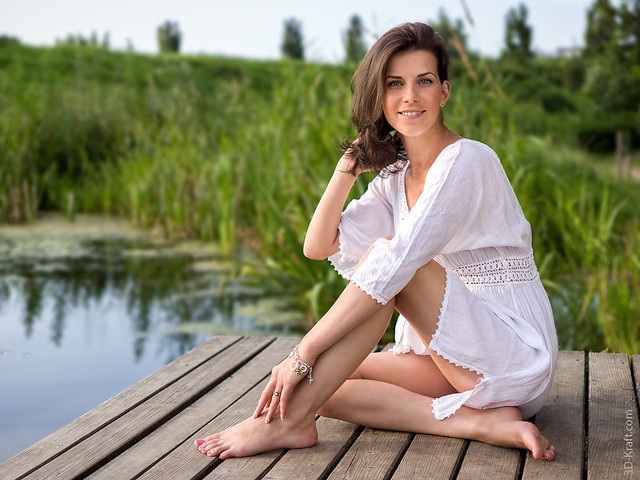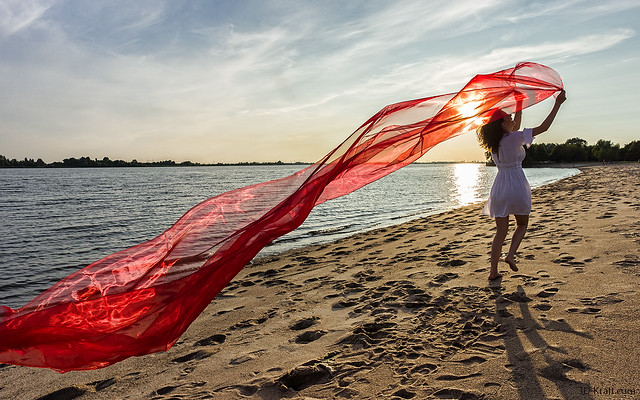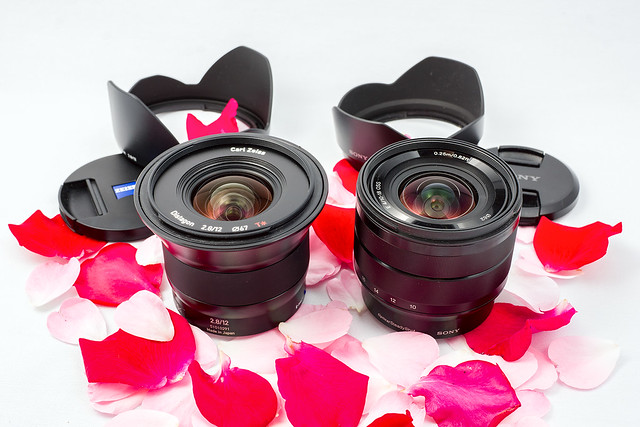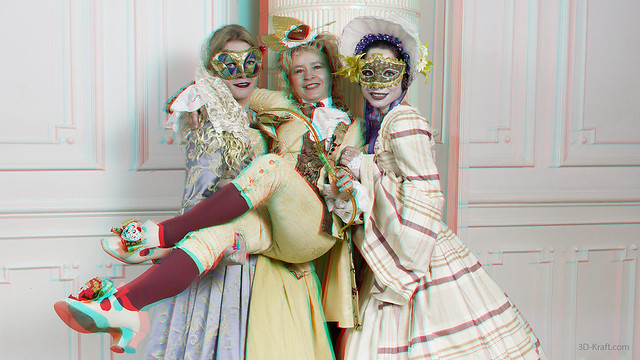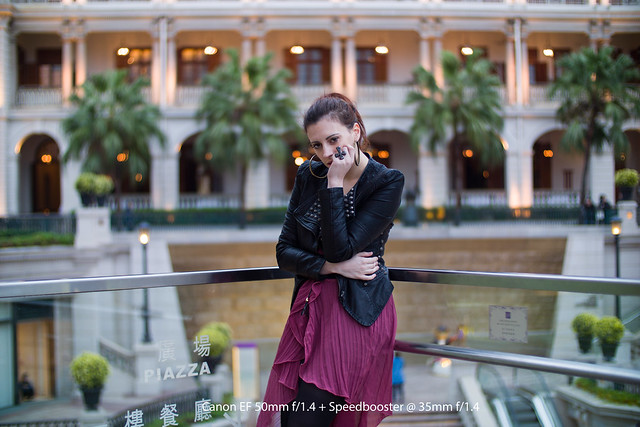August 2013 - time for some summerly (re-)views. Before this autumn will propably distract us to new fullframe NEX camera bodies and lenses, let us compare some of the latest offerings in the range of bright ~35mm lenses with a field of view equivalent to a 50mm lens on fullframe sensors. Beside some others, you can currently choose between the new Zeiss Touit Planar T* 32mm f/1.8, the Sony 35mm f/1.8 OSS and the SLR Magic HyperPrime CINE 35mm T0.95 (available from September 2013). This article will provide you an in-depth comparison between these lenses.
Before we go into details, let's compare sizes of the main competitors:

Left: Sony 35mm f/1.8 OSS, right: Zeiss Touit Planar T* 1.8/32 and their lens hoods
(image taken with the HyperPrime CINE 35 T0.95 (stopped down to T4.0 still showing round circles of confusion)
The Sony lens is a tad more compact than the Zeiss, the latter appears a bit more solid and with nicer haptics.
Before we come to a more detailed comparison, let me show you an example that I find quite significant for this type of lens, as it gives a good idea about the viewing angle and the depth-of-field that you can achieve at 32mm f/1.8 on an APS-C crop sensor:
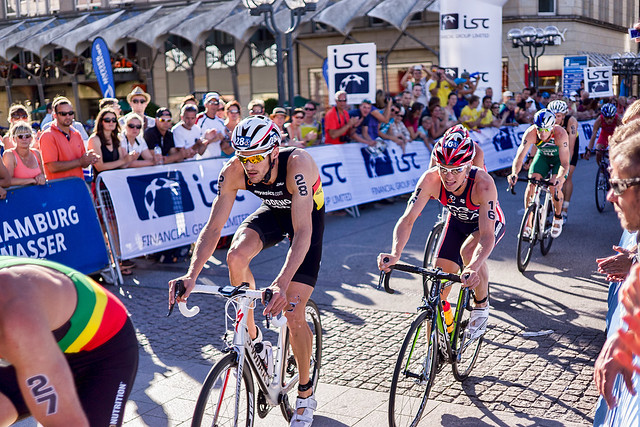
Triathlon world championship 2013 in Hamburg, shot with the Zeiss Touit 1.8/32 @ F1.8



